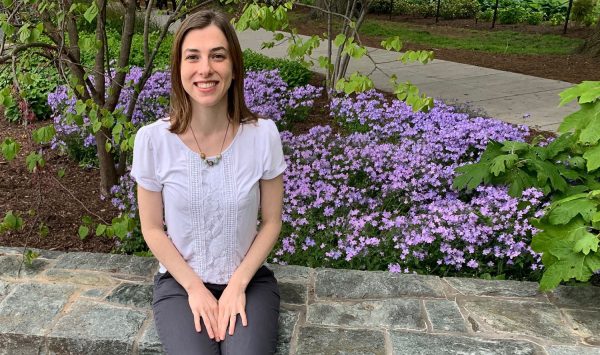Latest News: Where Technology, Public Health and Government Meet – Muhlenberg College
Alana Lerer ’11 works in Washington, D.C., to help shape the response to the COVID-19 pandemic.
By: A.C. Shilton Thursday, April 30, 2020 02:32 PM

Alana Lerer ’11, government relations manager at the Healthcare Information and Management Systems Society
Like many people working in public health, Alana Lerer ’11 had long worried about the lack of funding in her field. In fact, in 2019, as part of her position as government relations manager at the Healthcare Information and Management Systems Society (HIMSS), Lerer tried to secure $100 million in funding for 2020 and $1 billion over the next 10 years for the Centers for Disease Control and Prevention (CDC). Congress offered $50 million for the next fiscal year and wouldn’t commit to that level of funding beyond 2020.
As COVID-19 began to spread, Lerer, who was a psychology major at Muhlenberg and who went on to earn a master’s in public health, says she and her colleagues realized the urgency of the moment. “We know public health gets a boost in the face of a crisis,” she says. Lerer and her team worked with the lawmakers crafting the third COVID-19 relief package, the CARES Act, to secure an additional $500 million in funds for the CDC. These funds will be crucial in preparing for what comes next with COVID-19.
Trying to influence emergency legislation is just one of the many ways Lerer’s job has shifted from busy to frenetic in the past two months. HIMSS focuses explicitly on issues relating to technology and information management in public health and healthcare. These are two issues crucial to the fight against this pandemic.
“We’re working on ways to modernize our data infrastructure and surveillance to enable data to move in a faster, more efficient way between systems,” she says. For example, right now, results from COVID-19 tests need to be shared in real time with both local and state health officials. Some states have better sharing capabilities than others. And, of course, there’s an urgent need to ensure privacy as agencies move data between them.
Lerer is also working on growing access to telehealth. “It’s exactly what we need right now in order to social distance,” she says. But there’s at least one big issue: “A significant portion of the country doesn’t have high-speed broadband access.”
Now that more patients are taking advantage of virtual visits, we can expect a new normal even after the public health emergency ends. HIMSS, with the help of their diverse membership, is exploring how to shape the new normal for telehealth. From Lerer’s seat on the front lines in public health policy, it’s pretty clear that the old normal is over.
“We can’t go back to complete business as usual in a lot of ways. This has exposed so many issues in our current system,” she says.






